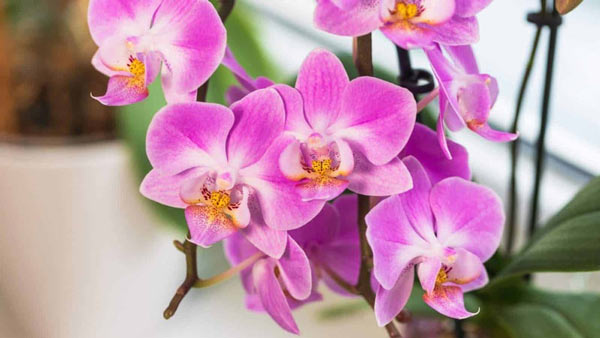The Amazon Rainforest, nestled in the heart of South America, bears witness to biodiversity, a living testament. A stunning variety of plant life thrives within this luxuriant expanse. Each boasts unique characteristics. Embarking on our journey, we aim to uncover secrets held by some of the coolest plants found here in Amazonia. It’s an exploration into the captivating realm inhabited by botanical wonders is underway.
The Resilient Kapok Tree
The formidable Kapok tree (Ceiba pentandra), a true giant of the rainforest that can reach heights up to 200 feet, is our first encounter with the Amazon's botanical wonders. These majestic trees, boasting colossal trunks and expansive buttress roots, function as architectural marvels in their ecosystem. Kapok trees, far from being mere towering entities, significantly contribute to the balance of the rainforest by providing various species home and acting as a carbon sink to mitigate climate change effects.
The Kapok tree canopy, rich with lush greenery, provides a refuge for wildlife such as birds, insects, and small mammals. These giants, whose expansive branches transform into bustling thoroughfares, emphasize their vital role in offering a haven specifically to Amazonian biodiversity.
- Carbon Sink: As carbon sinks, kapok trees absorb and store substantial quantities of carbon dioxide from the atmosphere. They perform this vital role of a crucial part in mitigating climate change.
- Canopy Oasis: Within the leafy embrace of Kapok trees' towering canopy, a unique microhabitat flourishes which is diverse flora and fauna.
Exotica Flora
The Amazon's undergrowth, when we delve deeper, reveals the fascinating world of the Pitcher Plant (Nepenthes spp.), a carnivorous marvel that adapts ingeniously to nutrient-poor soils. The plant lures unsuspecting insects into its traps, and modified leaves form pitcher-like structures for this purpose. It is an example of nature's remarkable strategy at work. Notably, this sophisticated adaptation, through a riveting display of nature's brilliance, underlines life's resilience amidst daunting ecological challenges.
The carnivorous strategy of the Pitcher Plant not only aids in nutrient acquisition, but it also functions as a natural pest control mechanism: by regulating insect populations. These plants play an integral role in maintaining the delicate ecological balance within the rainforest.
- Adaptive Survival: Pitcher plants exemplify adaptive survival strategies, thriving in environments where nutrient availability is limited.
- Biodiversity Indicator: Pitcher plants, relying on a diverse range of insect species for sustenance, frequently signal the presence of an ecosystem that is both healthy and rich in biodiversity.
Orchids
The Amazon Rainforest's vast canvas showcases orchids (Orchidaceae) as nature's intricate masterpieces, their beauty and diversity captivating all. These delicate flowers, numbering over 25,000 species have evolved to do more than please the eye. They engage in a delicate dance with their pollinators. Orchids of varied shapes and colors enrich the rainforest's rich tapestry, highlighting this unique ecosystem’s flora-fauna interconnectedness.

Orchids, beyond participating in the intricate pollination dance, often exhibit unique adaptations: they develop specialized structures that serve as safe havens for minuscule rainforest dwellers. This fosters a complex web of symbiotic relationships, an impressive demonstration indeed.
- Epiphytic Elegance: The Amazon's many orchid species, as elegant epiphytes, grow on trees without inflicting harm. It’s a remarkable display of their beauty and resilience.
- Microhabitat Havens: Insects and other small creatures find microhabitats within orchids, thus enhancing the rainforest's overall biodiversity.
The Enigmatic Corpse Flower
Venturing further into the heart of the rainforest, we encounter Amorphophallus titanium, the mysterious Corpse Flower. It unveils its colossal size and distinctive odor, a scent resembling rotting flesh. This enigmatic plant plays an essential role in the rainforest circle of life; it attracts carrion beetles and flies with its olfactory peculiarity. The rare bloom of this Corpse Flower not only captivates onlookers but also emphasizes nature's interdependence intricately. It’s a spectacle that underscores our understanding of complex ecological systems at work.
Not only does the blooming spectacle of the Corpse Flower offer a visual and olfactory experience, but it also plays an integral part in the ecological drama of the rainforest. At this crucial moment, life cycles from various species intertwine to ensure their continuity. Thus, emphasizing its significance within broader biodiversity patterns.
- Pollination Drama: The unique odor of the Corpse Flower is a crucial player in its reproductive success, luring specific pollinators with an irresistible scent.
- Limited Bloom Window: Infrequently, sometimes with years separating each bloom, the Corpse Flowers unveil their blossoms. This infrequency creates a fervently anticipated occurrence at every flowering event.
Rubber Trees
Rubber trees (Hevea brasiliensis), scattered across the Amazon, imprint an indelible mark on the region's history and economy. They served as a source of natural rubber that powered industries worldwide. Moreover, tapping their latex has provided sustenance for local communities through generations. The complex relationship between humans and the rainforest thus highlights a delicate dance necessitating careful consideration due to competing needs, economic demands versus environmental conservation.

These trees yield rubber that serves not only economic purposes but also bridges indigenous cultures and the forest. The communities underline their profound connection with traditional rituals and practices, which frequently center around the rubber trees, emphasizing an inseparable bond between them and their natural environment.
- Sustainable Tapping Practices: Sustainable tapping practices implementation guarantees the rubber tree plantations' longevity, all without inflicting enduring damage on the rainforest.
- Cultural Significance: Indigenous communities attribute cultural significance to rubber trees, often intertwining traditional practices with the tapping of latex.
Conclusion
Concluding our journey through the Amazon's coolest plants, we perceive this lush ecosystem as an undeniable treasure trove of botanical wonders. The towering Kapok trees and alluring Corpse Flower each contribute uniquely to the complex web of life in the rainforest. Our understanding of conservation's importance intensifies. Sustainable practices take on heightened significance when we consider preserving, even more than previously thought, the rich biodiversity tapestry that transforms the Amazon Rainforest into a truly remarkable, irreplaceable gem on our planet.




